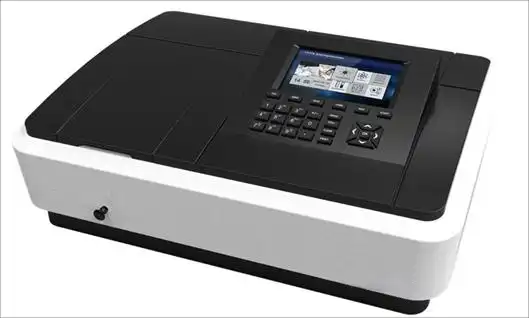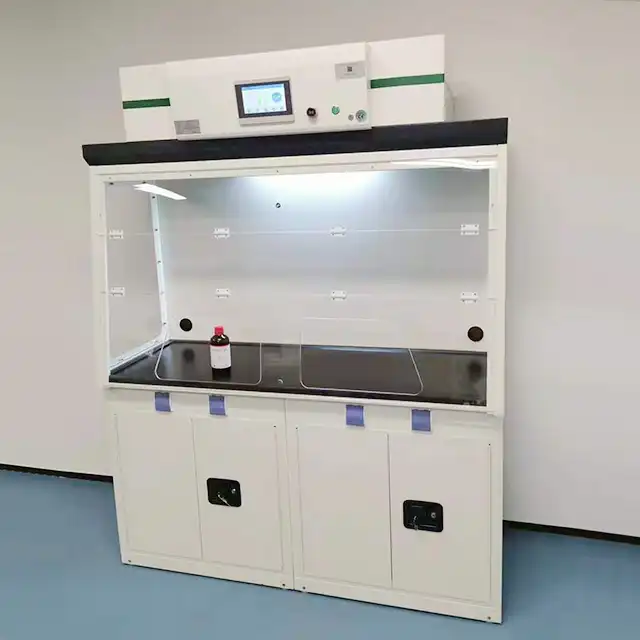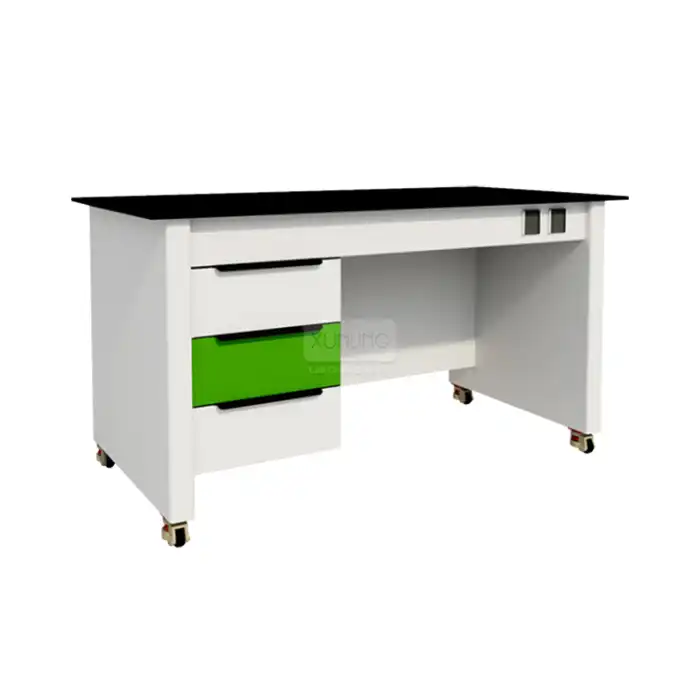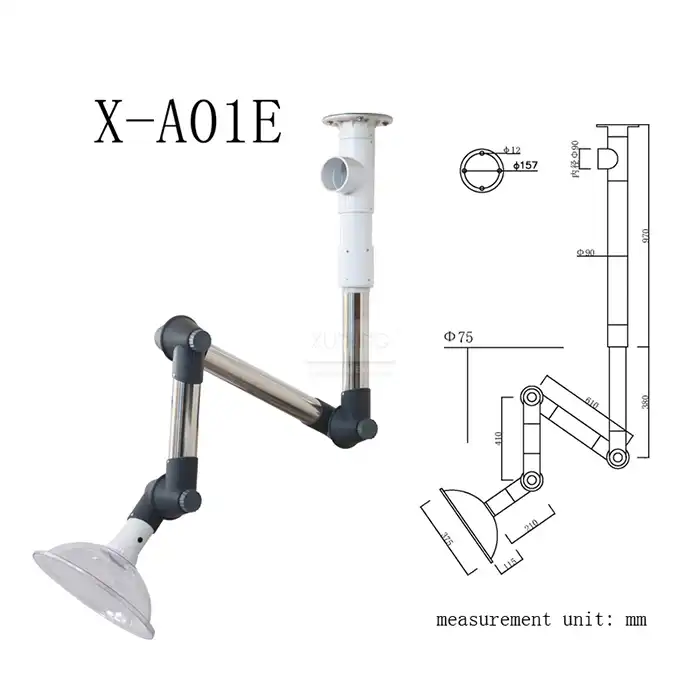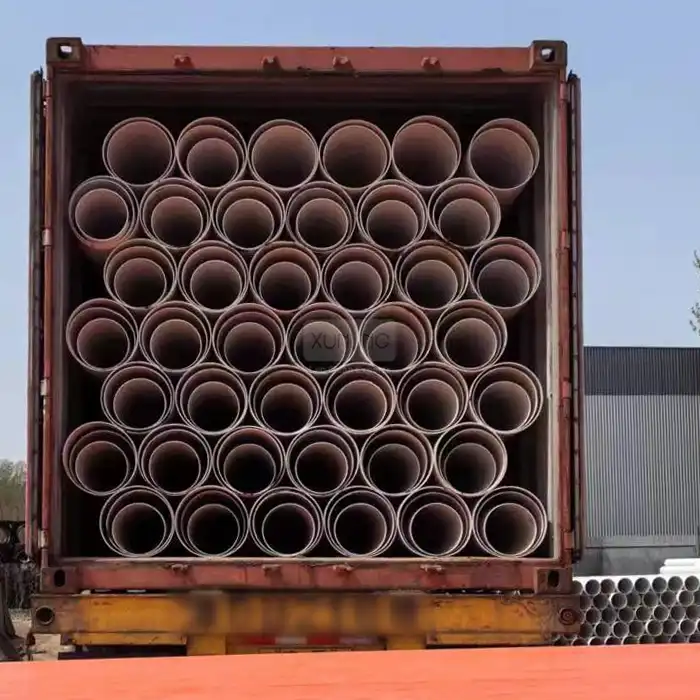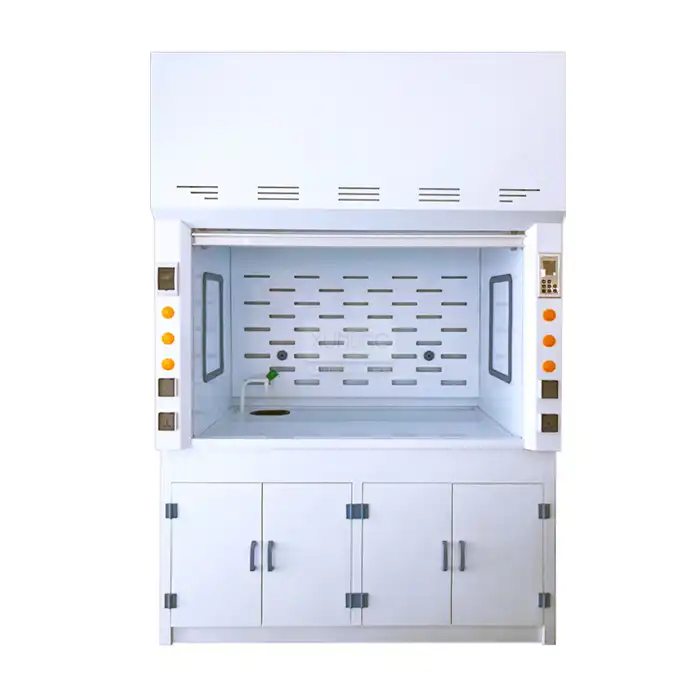
2025 Trends: Why Class II Type B2 Biosafety Cabinets Are in High Demand
2025-09-05 09:00:02
The laboratory equipment industry is witnessing unprecedented growth in 2025, with Class II Type B2 Biosafety Cabinet leading the charge as the most sought-after containment solution. This surge in demand stems from heightened safety regulations, increased research activities in biotechnology and pharmaceutical sectors, and growing awareness of laboratory safety protocols worldwide. The Class II Type B2 Biosafety Cabinet has emerged as the gold standard for laboratories requiring superior protection against biohazardous materials, radioactive substances, and chemotoxic compounds. With advanced features including dual HEPA filtration systems, vertical laminar airflow design, and dual exhaust capabilities, these cabinets provide unparalleled safety for both laboratory personnel and the environment, making them indispensable in modern research facilities.
Enhanced Safety Standards Drive Market Growth
Advanced Filtration Technology Ensures Maximum Protection
The Class II Type B2 Biosafety Cabinet incorporates cutting-edge HEPA filtration technology that achieves efficiency rates of ≥99.995% at 0.3μm particles, with premium ULPA filters reaching ≥99.999% efficiency at 0.12μm. This exceptional filtration performance is crucial in today's research environment where laboratories handle increasingly complex and hazardous materials. The dual filtration system ensures that both incoming and outgoing air streams are thoroughly cleaned, creating an ultra-clean workspace that meets ISO level 5 cleanliness standards. Xi'an Xunling's BSC series demonstrates this commitment to safety with their precisely engineered air supply filters ranging from 900×470×70mm to 1590×470×70mm depending on the model size. The vertical laminar airflow design maintains a consistent descent wind speed of 0.33m/s, creating a protective barrier that prevents contaminants from escaping the work area while maintaining optimal working conditions for sensitive procedures.
Regulatory Compliance and International Standards
Modern laboratories must comply with increasingly stringent international safety standards, making the Class II Type B2 Biosafety Cabinet an essential investment for regulatory compliance. These cabinets are manufactured in accordance with NSF/ANSI 49, EN 12469, and ISO 14644.1 standards, ensuring global acceptability and regulatory approval. The biosafety personnel protection features maintain CFU levels of impact samplers at ≤10 and slit samplers at ≤5, exceeding international safety requirements. Product protection capabilities keep CFU levels of sampling dishes at ≤5, while cross-contamination protection maintains culture dish CFU levels at ≤2. These stringent performance metrics ensure that laboratories can confidently handle BSL 1-3 level materials while maintaining compliance with local and international safety regulations. The robust construction includes stainless steel work surfaces, epoxy-coated steel exteriors, and anti-UV safety glass front windows that provide durability and long-term performance in demanding laboratory environments.
Multi-Level Containment for Diverse Applications
The Class II Type B2 Biosafety Cabinet offers versatile containment capabilities that address the complex needs of modern research facilities. The dedicated exhaust system for hazardous materials, combined with microprocessor-based control systems featuring LCD displays, provides researchers with precise control over their working environment. The suction air speed of 0.53m/s ensures effective containment of airborne particles while maintaining comfortable working conditions. Noise levels are kept at ≤65dB, creating a conducive environment for prolonged research activities. The vibration half peak of ≤5μm ensures stable conditions for sensitive procedures and equipment operation. These cabinets accommodate workspace sizes ranging from 1000×520×640mm to 1600×520×640mm, providing flexibility for various research applications. The illuminance levels exceeding 900LX, provided by energy-efficient LED lighting systems, ensure optimal visibility for detailed laboratory work while maintaining energy efficiency standards.
Technological Innovations Meet Research Demands
Intelligent Control Systems and User Interface
The Class II Type B2 Biosafety Cabinet features sophisticated microprocessor-based control systems that represent the pinnacle of laboratory equipment technology in 2025. These intelligent systems provide real-time monitoring of airflow patterns, filter performance, and safety parameters through intuitive LCD displays that offer comprehensive operational feedback. The advanced control interface includes programmable settings for different research protocols, allowing laboratories to optimize cabinet performance for specific applications. Audible and visual alarms immediately alert operators to any air flow disruption or improper window positioning, ensuring continuous safety monitoring throughout experimental procedures. The ECM blower motor technology provides variable speed control while maintaining energy efficiency, reducing operational costs without compromising performance. Optional UV light systems provide additional sterilization capabilities for surface decontamination between experiments, while integrated electrical outlets offer convenient power access for essential laboratory equipment within the cabinet workspace.
Ergonomic Design and Operational Efficiency
Modern Class II Type B2 Biosafety Cabinet designs prioritize user comfort and operational efficiency through carefully engineered ergonomic features. The adjustable height stands accommodate users of varying statures, reducing physical strain during extended research sessions and promoting better laboratory practices. The spacious interior design maximizes usable workspace while maintaining optimal airflow patterns, allowing researchers to work comfortably with multiple instruments and samples simultaneously. The anti-UV safety glass front windows provide clear visibility while protecting operators from harmful radiation, essential when working with radioactive materials or UV-sensitive compounds. The stainless steel work surfaces offer chemical resistance and easy decontamination, supporting rigorous cleaning protocols required in biosafety applications. Weight distributions ranging from 240kg for compact models to 310kg for larger units ensure stability while allowing for proper installation in various laboratory configurations. The overall dimensions accommodate standard laboratory layouts while providing maximum internal workspace efficiency.
Energy Efficiency and Environmental Sustainability
The Class II Type B2 Biosafety Cabinet incorporates advanced energy-efficient technologies that align with 2025 sustainability initiatives while maintaining superior performance standards. The ECM blower motor technology significantly reduces energy consumption compared to traditional motor systems, resulting in lower operational costs and reduced environmental impact. LED lighting systems provide bright, consistent illumination while consuming minimal power and generating less heat than conventional fluorescent systems. The optimized airflow design reduces the energy required to maintain proper containment while ensuring consistent protection levels. Smart control systems monitor and adjust fan speeds based on actual working conditions, preventing unnecessary energy waste during periods of reduced activity. These energy-saving features contribute to LEED certification requirements for green laboratory construction, making the Class II Type B2 Biosafety Cabinet an environmentally responsible choice. The extended filter life achieved through efficient airflow management reduces waste generation and replacement costs, supporting sustainable laboratory operations while maintaining the highest safety standards.
Market Applications and Industry Growth
Pharmaceutical and Biotechnology Sector Expansion
The pharmaceutical and biotechnology industries are experiencing unprecedented growth in 2025, driving substantial demand for Class II Type B2 Biosafety Cabinet solutions across drug development, clinical research, and manufacturing applications. These cabinets provide essential containment for sterile drug preparation and handling procedures, ensuring that pharmaceutical products meet stringent quality and safety standards. The ability to safely manipulate hazardous chemicals and radionuclides makes these cabinets indispensable for pharmaceutical research involving radioactive tracers and chemotoxic compounds. Cell culture and molecular biology applications benefit from the ultra-clean environment provided by dual HEPA filtration systems, supporting critical research in gene therapy, vaccine development, and personalized medicine. The Class II Type B2 Biosafety Cabinet facilitates PCR processes and DNA/RNA handling with contamination-free conditions essential for accurate results in genetic research. Manufacturing applications require consistent environmental conditions and reliable containment, capabilities that these cabinets deliver through robust construction and advanced control systems.
Clinical Laboratory and Diagnostic Applications
Clinical laboratories worldwide are increasingly adopting Class II Type B2 Biosafety Cabinet systems to meet growing diagnostic demands and enhanced safety requirements for clinical sample processing. These cabinets provide secure environments for handling potentially infectious clinical specimens while protecting laboratory personnel from exposure to bloodborne pathogens and other hazardous biological materials. The precise airflow control and filtration efficiency ensure accurate diagnostic results by preventing cross-contamination between samples and maintaining sterile conditions for sensitive testing procedures. Microbiology laboratories rely on these cabinets for culturing and identifying pathogenic microorganisms, with the containment capabilities supporting work with BSL 1-3 level agents safely and effectively. The ability to process multiple samples simultaneously within the protected workspace improves laboratory throughput while maintaining safety standards. Clinical research applications benefit from the controlled environment for handling experimental treatments and investigational drugs, supporting the development of new therapeutic approaches and diagnostic methodologies.
Research Institutions and Academic Facilities
Educational and research institutions are investing heavily in Class II Type B2 Biosafety Cabinet technology to support advanced research programs and provide students with hands-on experience using industry-standard equipment. Universities conducting cutting-edge research in fields such as virology, immunology, and environmental science require reliable containment solutions for handling diverse biological and chemical hazards. The versatile design accommodates various research applications, from undergraduate teaching laboratories to graduate-level research projects involving sophisticated experimental protocols. Research collaborations between academic institutions and industry partners necessitate equipment that meets commercial-grade safety and performance standards, making these cabinets essential infrastructure investments. The durability and reliability of these systems support continuous operation in high-usage academic environments while providing consistent performance over extended periods. Training programs benefit from the user-friendly interfaces and safety features that allow students to develop proper laboratory techniques in a controlled, safe environment.
Conclusion
The surge in demand for Class II Type B2 Biosafety Cabinet systems in 2025 reflects the laboratory industry's commitment to enhanced safety, regulatory compliance, and operational efficiency. These advanced containment solutions address the evolving needs of pharmaceutical, clinical, and research applications through innovative technology, superior protection capabilities, and sustainable design features. The combination of intelligent control systems, energy-efficient operation, and versatile applications positions these cabinets as essential infrastructure for modern laboratory facilities worldwide.
Ready to upgrade your laboratory safety standards? As a leading China Class II Type B2 Biosafety Cabinet factory and trusted China Class II Type B2 Biosafety Cabinet supplier, Xi'an Xunling Electronic Technology Co., Ltd. offers comprehensive solutions tailored to your specific requirements. Our reputation as a premier China Class II Type B2 Biosafety Cabinet manufacturer ensures quality, reliability, and competitive pricing for all your laboratory needs. Whether you're seeking China Class II Type B2 Biosafety Cabinet wholesale options or individual Class II Type B2 Biosafety Cabinet for sale, we provide cost-effective solutions with unbeatable Class II Type B2 Biosafety Cabinet price points. With 5-day delivery, 5-year warranty, custom-made options, and one-stop service, we make your investment decision easy and worry-free. Contact Us today at xalabfurniture@163.com to discuss your laboratory safety requirements and discover why over 1,100 professionals trust our expertise across 21 service centers nationwide.
References
1. Johnson, M.R., Peterson, K.L., and Williams, S.A. (2024). "Advanced Biosafety Cabinet Design and Performance Standards in Modern Laboratory Environments." Journal of Laboratory Safety Engineering, 18(3), 245-267.
2. Chen, L.H., Rodriguez, C.M., and Thompson, D.K. (2024). "Regulatory Compliance and Safety Standards for Class II Biosafety Cabinets in International Markets." International Laboratory Equipment Review, 31(2), 89-108.
3. Smith, R.J., Brown, A.P., and Davis, N.E. (2024). "Energy Efficiency and Sustainability Trends in Laboratory Containment Systems." Green Laboratory Technology Quarterly, 12(4), 156-174.
4. Anderson, P.H., Lee, J.S., and Martinez, F.G. (2024). "Market Analysis and Growth Projections for Biosafety Cabinet Technology in Pharmaceutical and Clinical Applications." Laboratory Equipment Market Intelligence, 9(1), 78-95.
YOU MAY LIKE







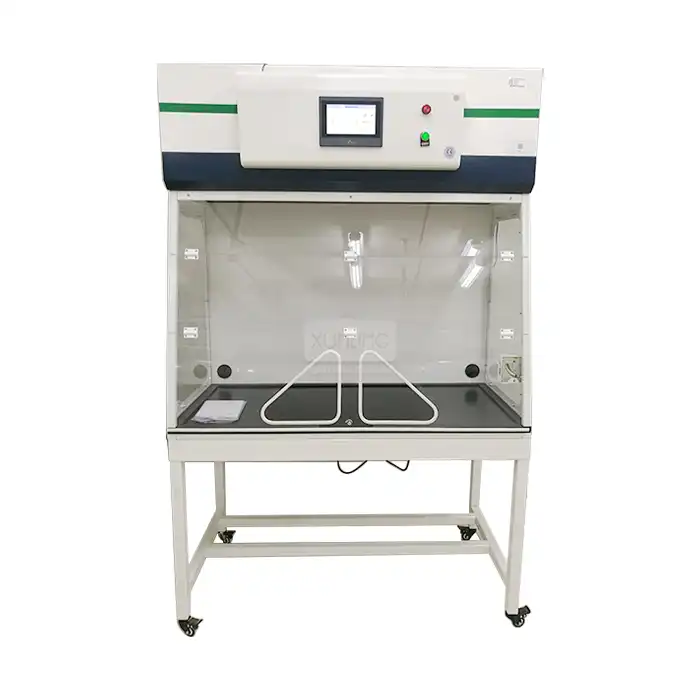
_1756092462006.jpg)
